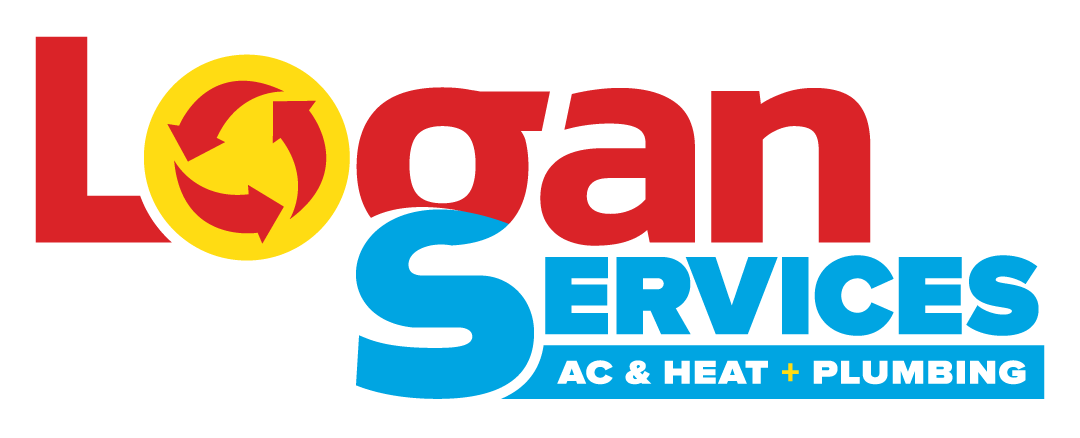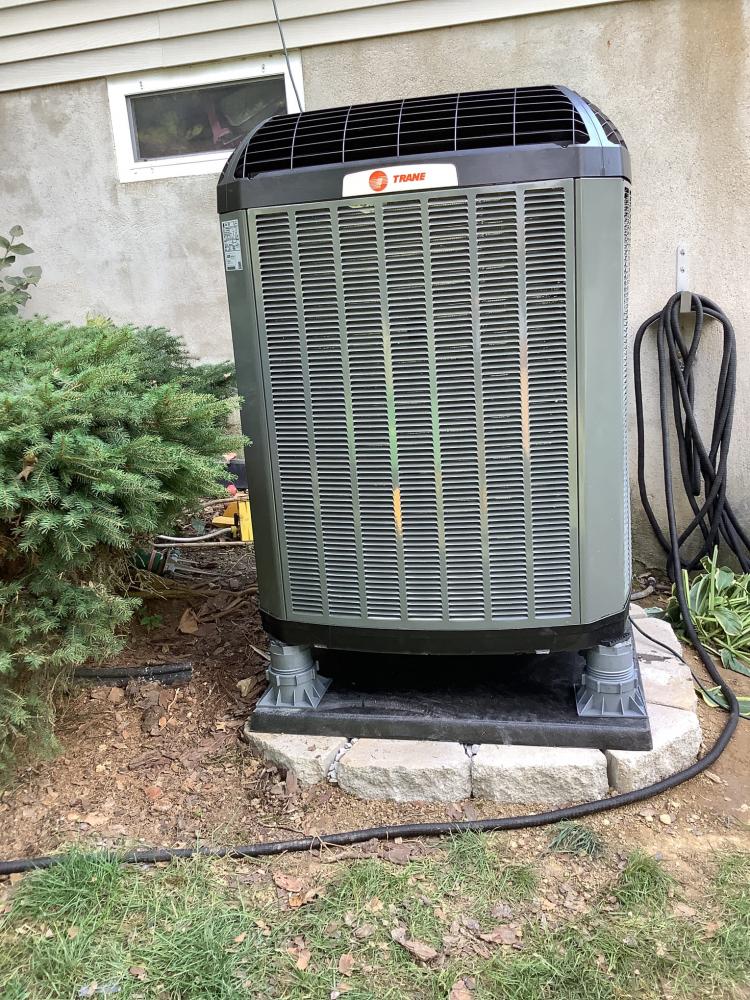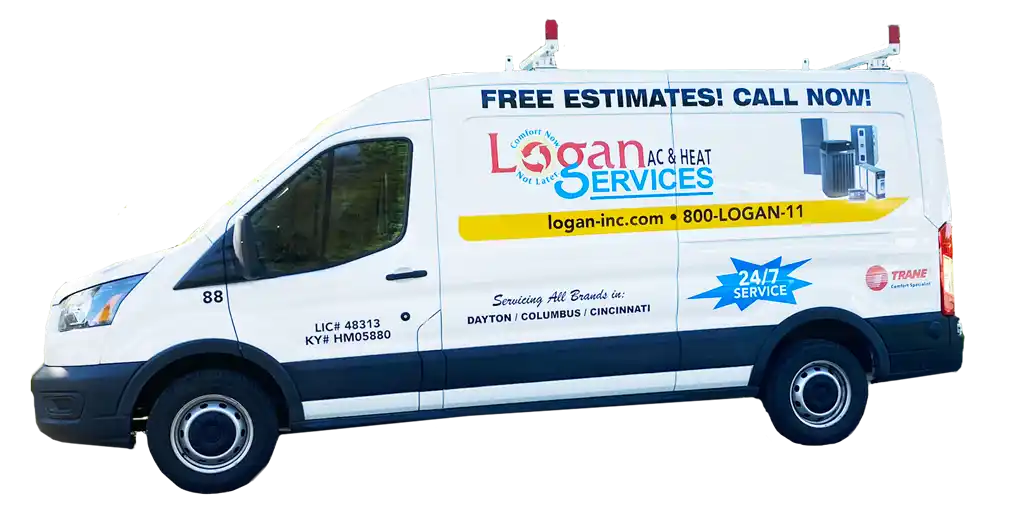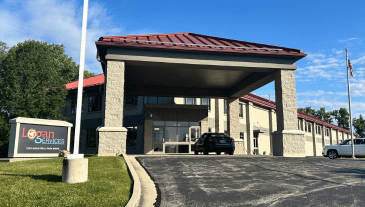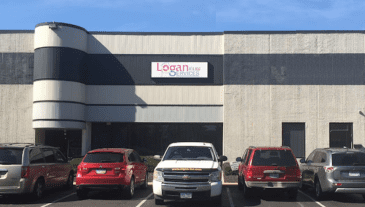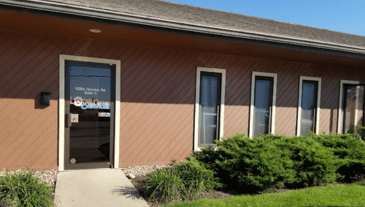What Is A Heat Pump?
When researching heat pumps, you will find that there are several different types available, including air-source heat pumps, geothermal heat pumps, ground-source heat pumps, and water-source heat pumps. At Logan Services, we offer air-source heat pump systems. These systems are the most common pumps used to handle the tough winter climate in Ohio.
So how do these electric heat pumps work? The heat pump unit is positioned outside the home. It absorbs heat from the outdoor air and delivers it to the indoor air handler (electric furnace) through refrigeration. The air flows over a hot indoor coil powered by electricity. Then, the air flows up through the ductwork to heat your home.
Heat pumps are not as efficient when temperatures dip because there typically aren’t enough hot air molecules from the outdoor air to be transferred inside. Extreme cold causes more work for the heat pump and higher energy usage. You will have to rely on backup heat sources, such as the heat strips from the indoor air handler, to keep your home comfortable.
In air conditioning mode, the heat pump will reverse its refrigerant cycle through a reversing valve to transform into a cooling system. Have you ever felt the heat from an air conditioner in the summertime? That’s the heat from your house. The outdoor unit in cooling mode removes heat/humidity from the inside and expels it to the outdoors, making your home feel comfortable.
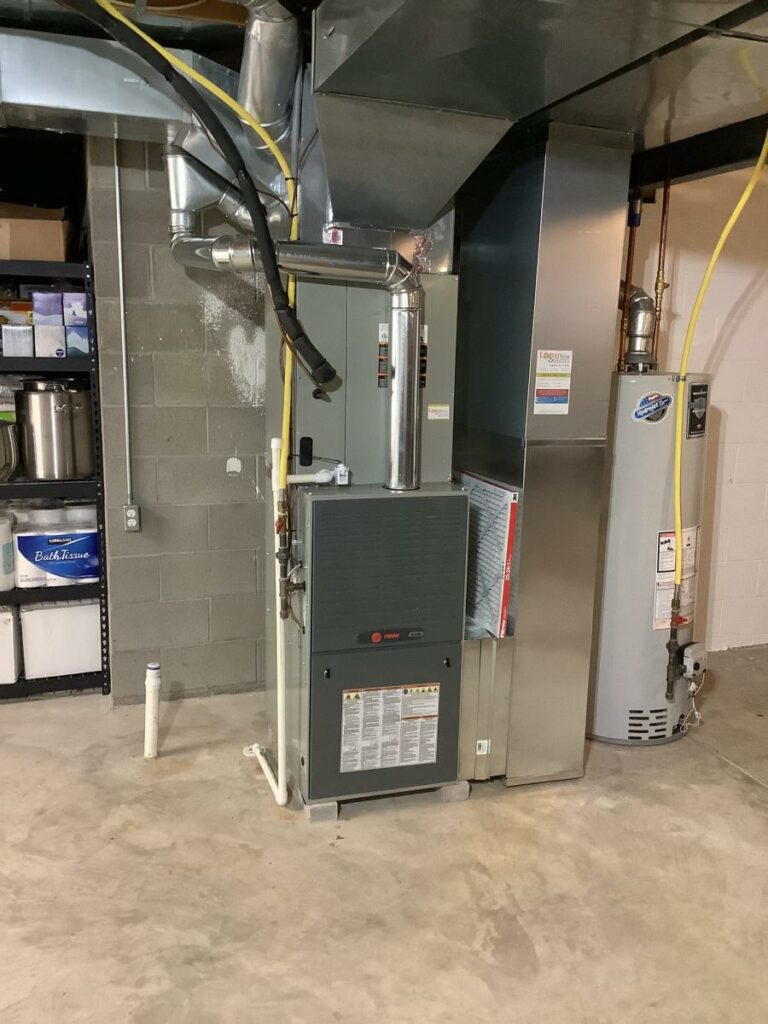
What Is A Furnace?
Contrary to a heat pump, a furnace uses natural gas, oil, or propane as a fuel source to provide heat for the entire dwelling space. Furnaces are typically located indoors in a basement, utility closet, or, sometimes, in an attic. A furnace works with an initial call for heat from the comfort control (the thermostat). The vent motor engages and starts to spin. Then it pulls in a pressure switch which sends a signal to the circuit board to begin the ignition process, and the fuel source ignites. A thermocouple or a flame sensor senses the flame. Once that happens, the blower is signaled to start. The blower sends air across the heat exchanger and provides warm air for the home.
Our Guide: Heat Pump vs. Furnace
When making a heat pump comparison with traditional furnaces, the fuel source emerges as the major difference between the two systems. A heat pump operates on electricity, while a furnace uses natural gas, heating oil, or propane. Heat pumps are positioned outside the home and are generally connected to electric furnaces called air handlers.
However, there are a few other differences you should consider:
Installation
A furnace requires ventilation either through metal or PVC piping or even through a chimney flue. A heat pump does not need to be ventilated.
Furnaces can produce harmful gasses when heat exchangers crack due to expansion. This can cause carbon monoxide poisoning. A furnace must be vented properly; otherwise, it could be a serious safety hazard. A heat pump does not produce carbon monoxide and does not require additional ventilation.
Cost
There’s not much variation in the upfront costs of an air source heat pump vs. a gas furnace system. Systems range in price from $6,000 to $16,000+ and can vary based on system size, energy efficiency, and additional air quality options such as air cleaners, UV-light systems, and more.
Expect to pay a bit more for high-efficiency heat pumps, but keep in mind these systems will do a much better job of keeping your home comfortable by producing consistent temperatures throughout the home and eliminating more humidity in the summertime.
When researching your heat pump installation project, it’s always best to get an in-home estimate for the work needed. This will allow a trained professional to properly give you heat pump choices that will meet the needs of your home, lifestyle, and budget.
Dual fuel systems allow homeowners to generate heat with either electric or fossil fuels. As energy costs are rising, a dual-fuel system can give any homeowner peace of mind by having some control over utility usage and operating costs when cold weather strikes.
Maintenance
A heat pump requires clean air filtration. It’s important to get outdoor units cleaned annually through a maintenance plan. During your maintenance plan visit, a service technician will ensure that all heat pump components are in proper working condition and that nothing has weakened during the usage season. The service technician will also clean your system’s coils on the inside and outdoor unit of your electric heating system. They will also make sure there’s clearance around the outdoor unit, being mindful that there are no bushes or debris that can damage your outdoor heat pump.
Like heat pump maintenance, a gas furnace requires proper airflow with clean filtration. During a maintenance visit, the technician will also check and clean the burners, flame sensors, and more.
Whether using an electric system or a traditional natural gas-burning furnace, it’s always important to routinely change the air filter. Homeowners should remove any dirty filters monthly and replace them with fresh, clean filters to ensure proper system airflow and healthy indoor air quality.
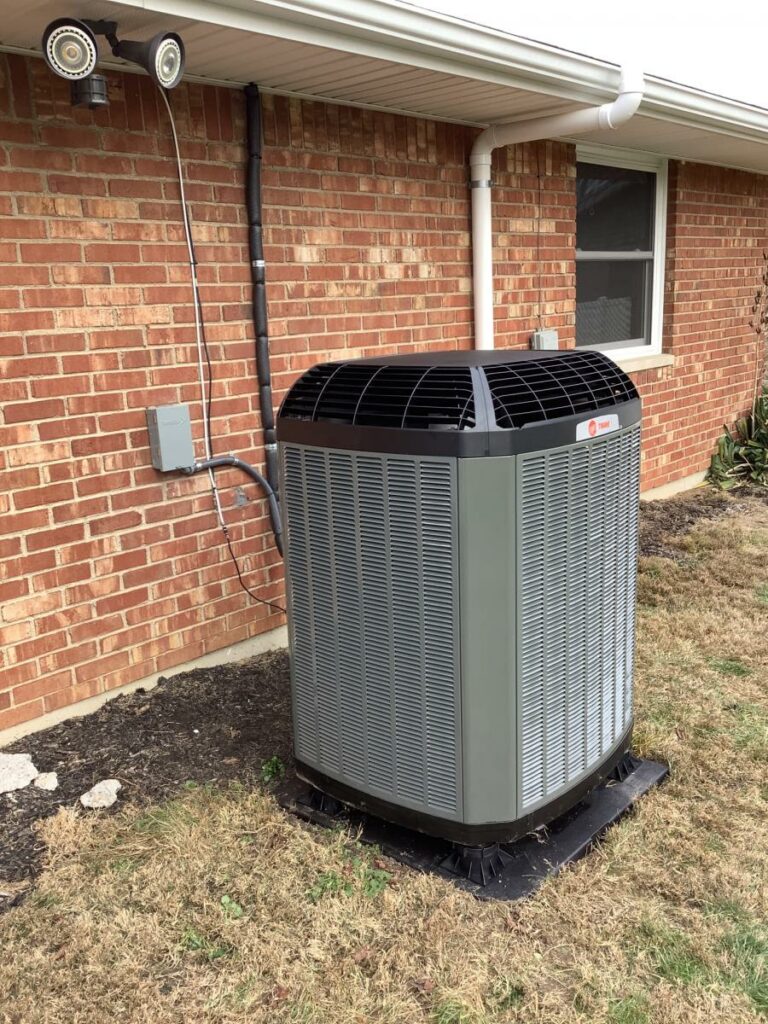
Performance
In colder climates, fuel-burning furnaces typically provide warmer, more consistent heat. A heat pump will produce cooler heat which varies with the temperature outside. As it gets colder outside, the heat pump will produce less warm heat, and the pump will have to be supplemented by a backup fuel-burning furnace or an electric air handler. In the winter, natural gas is generally the most efficient and warmest way to heat your home in Ohio.
System Efficiency: Difference Between Furnace and Heat Pump
Remember, a heat pump uses electricity to heat and cool your home, whereas a furnace uses gas, propane, or oil. Some high-efficiency gas furnaces will operate at 96% efficiency, which can help reduce your fossil fuel utility usage. You can also reduce the number of fossil fuels and lower your carbon footprint by using a heat pump on milder days vs. running a gas or propane furnace at full blast to heat your home.
Types of Furnaces for Ohio Homes
- Gas furnaces: Natural gas furnaces are the most common heating option in Ohio due to their reliability in cold weather. These systems ignite natural gas in a combustion chamber, transferring heat through a heat exchanger before distributing warm air throughout your home. Gas furnaces deliver higher temperature air than heat pumps, making them particularly effective during Ohio’s coldest months.
- Electric furnaces: Electric furnaces heat your home by drawing air across heated electric coils. While they’re typically less expensive to install than gas models, they generally cost more to operate in Ohio’s climate. These systems are most practical in areas without natural gas service or as backup heat sources in dual-fuel systems.
- Propane furnaces: For Ohio homes without access to natural gas lines, especially in rural areas, propane furnaces provide an excellent alternative. These systems function similarly to natural gas furnaces but require an on-property propane tank. Many gas furnaces can be converted to use propane with professional modification.
Expected lifespan
A gas furnace operates 4-5 months each year. Most heat pumps work twice as much because they operate both in the summer (for cooling cycles) and the winter (for heating cycles).
The lifespan of a heat pump usually isn’t as long as a traditional furnace because seasonality places twice the wear and tear on the outdoor unit. You’re doing great if you get 10 years or more out of a heat pump. The life expectancy for a furnace is 12-15 years.
What Are The Benefits of a Heat Pump?
Heat pumps offer several advantages for Ohio homeowners looking to improve their home comfort systems. Before making your decision between a heat pump vs. furnace, consider these key benefits that set heat pumps apart from traditional heating and cooling solutions:
- Dual functionality: Heat pumps provide year-round comfort with both heating and cooling capabilities in a single system.
- Safety advantages: Heat pumps operate without combustion, eliminating carbon monoxide risks associated with gas furnaces.
- Adaptable performance: Heat pumps offer flexible operation across varying Ohio temperatures.
- Seasonal efficiency: Heat pumps deliver energy-efficient heating performance during mild weather conditions.
One of the biggest benefits of a heat pump is that it can both heat and cool your home. Operating a fuel-burning furnace may be best during the coldest days of the year.
Another benefit of a heat pump system is not having to worry about carbon monoxide poisoning. With a furnace, you must have working carbon monoxide detectors throughout your home.
Heat pumps can be used in all seasons. On the contrary, if you don’t have a heat pump, you’ll need a furnace and an air conditioner to stay comfortable year-round. These pumps can be a great option or alternative to air conditioners since you can utilize a heat pump for warmth on chilly days that tend to be slightly milder in temperature. This setup can offer you optimal heating and cooling performance.
Which System is Right For You?
When deciding between installing a heat pump or a furnace for your Ohio home, several important factors will influence your heating system decision:
- Energy infrastructure: Your home’s current energy source availability (all-electric vs. natural gas/propane access).
- Regional climate considerations: Ohio’s seasonal temperature patterns and winter temperature extremes.
- Efficiency priorities: Your household’s energy efficiency goals and monthly utility cost concerns.
- Investment planning: Budget considerations for system installation, operation, and maintenance costs.
- Comfort requirements: Your family’s long-term heating comfort preferences and temperature consistency needs.
If you have an all-electric home, it’s important to consider a heat pump if you don’t already have one. If you want to improve your home’s energy or utility usage, a dual-fuel heating system can be an excellent solution for your home. Get a free estimate to better understand what will work for your home. Estimates usually take about one hour to complete, and it’s an opportunity for you to ask questions about your home improvement project to ensure you select the right system for your home, budget, and lifestyle.
To schedule your free same-day estimate with Logan Services A/C, Heat & Plumbing, contact us today.
The Logan Services Difference
As a family-owned and operated business serving Ohio communities, Logan Services understands that installing or servicing your home’s comfort system is more than just a technical process – it’s about trust, quality, and long-term peace of mind.
Our reputation is built on the expertise of our installation teams. We invest in training programs, ensuring every technician masters not just the technical aspects of HVAC systems, but also our exacting standards for customer care. Before any installation begins, our teams verify that every necessary part is on hand, eliminating the frustration of unexpected delays that are all too common in our industry.
Each installation follows a detailed checklist that must be signed off by our experienced installation managers. These aren’t just checkboxes to us – they’re our promise of excellence to every customer. Once installation is complete, we take the time to walk you through your new system, showing you exactly how everything works and addressing any questions you might have. We even help guarantee your warranty is properly registered and documented, so you never have to worry about paperwork falling through the cracks.
When you choose Logan Services, you’re choosing a team that takes pride in doing things the right way, every time. From our family to yours, that’s the Logan Services difference.
Frequently Asked Questions
Can I use both a heat pump and furnace?
Yes! This is called a dual-fuel system, which combines the benefits of both technologies. It allows you to use the most efficient heating method based on outdoor temperatures and current energy costs.
How do I know which heating system is right for my home?
The best way to determine the right system is to schedule a free in-home estimate with Logan Services. Our comfort consultants will evaluate your home’s specific needs, discuss your preferences, and help you choose the most appropriate heating solution.
Do heat pumps work in freezing temperatures?
While heat pumps can operate in cold weather, they become less efficient as temperatures drop. In Ohio’s climate, many homeowners opt for dual-fuel systems that combine a heat pump with a furnace for optimal performance year-round.
